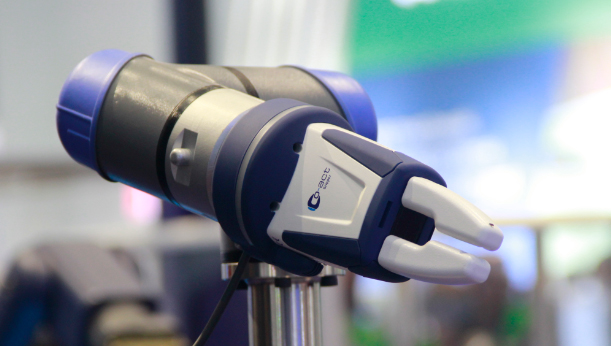The industrial robot market is shrinking? North American first quarter orders fell
Under the general trend of the gradual disappearance of the demographic dividend, global manufacturing has set off a wave of machine substitutions, and promoted the upgrading of factories to transform into intelligent manufacturing to achieve flexible manufacturing under the Industry 4.0 model. As the core role of the future manufacturing industry, industrial robots are widely used in manufacturing sectors in various fields and stimulate more and more market potential.
However, the global economic environment after 2018 is not optimistic, and the growth of industrial robots has begun to slow down. Recently, the latest statistics released by the Robotics Industry Association (RIA) show that North American robot orders fell in the first quarter of 2019. In the first three months, a total of 7,876 industrial robots were purchased, valued at $423 million. Compared with the same period of the previous year, sales volume decreased by 3.5% and revenue decreased by 3.2%.
Industrial robots performed poorly in many areas, with orders falling by 17% in the electronics and metals industries and 16% in the auto parts industry. However, there are also some industries showing a growing trend, such as auto equipment manufacturers' robot orders increased by 41%, and food and consumer goods orders increased by 32%.

The robot industry is more optimistic than the previous year
The decline in the North American market is not sudden, as global industrial robot sales increased by only 1% year-on-year in 2018, and the entire market has shown signs of slowing. So, what caused the market to shrink? On the one hand, factory enterprises have to face the impact of the economy, and industrial robot technology is still in development, may not achieve the expected results, but in the long run is still optimistic.
From the industry point of view, the reduction in procurement by automation suppliers is cyclical, and the slowdown in capital expenditures is a factor. Overall, long-term signs are still very healthy, and more and more companies are beginning to explore robotics and automation technology, hoping to help companies improve efficiency and become more competitive.
The industrial robot market is shrinking? North American first quarter orders fell
The International Robotics Federation is predicting this year's performance in the 2018 Global Shipment Report, and global industrial robots will grow by 10% in 2019. From a capital perspective, the environment is more optimistic than the previous year, and the auto parts market has maintained strong growth, which will bring more protection to the robot industry.
In the past six months, the non-automotive industry has been growing steadily for most of the time. General industrial orders increased by 17% in 2018, while orders from the automotive industry decreased by 33%. The automotive industry faces many challenges such as corporate restructuring due to the transformation of new energy vehicles and automatic driving, but this is cyclical.
Smart manufacturing will trigger significant opportunities

Manufacturing transformation Intelligent manufacturing is a trend of the general trend. Machine substitution is an inevitable process of upgrading. The use of robots not only relieves the pressure of the enterprise's manpower, but also improves the production efficiency of the factory and realizes the flexible production capacity. Small batches of multiple batches of product requirements.
In an environment of increasing personal consumption, many manufacturers report that orders from customers change rapidly, and in a few months, they need to adjust the process to produce new products. This situation is undoubtedly a huge challenge for traditional manufacturing. Therefore, modern manufacturing requires a flexible manufacturing model, that is, flexible production, which is highly automated.
The flexibility of the robot has made it possible for the factory to upgrade Industry 4.0, especially collaborative robots, which are easy to edit and use. Manufacturers can achieve immediate automation and change the production process at any time without spending a lot of time debugging. Collaborative robots are easy to edit and do not require professional technicians, which saves more capital.
The industrial robot market is shrinking? North American first quarter orders fell
In addition, mobile robots can help the production line to manufacture products more efficiently and flexibly. The autonomous navigation technology is gradually matured. The mobile robot can change the movement route at any time, realize different scene switching, and seamlessly connect the production line with the material warehouse.
In general, robots will play an increasingly important role in the future manufacturing industry. At the same time, with the advancement of artificial intelligence, Internet of Things and other technologies, the capabilities of robots will be further upgraded and will open up a wider application space.
















 RCCN WeChat QrCode
RCCN WeChat QrCode Mobile WebSite
Mobile WebSite